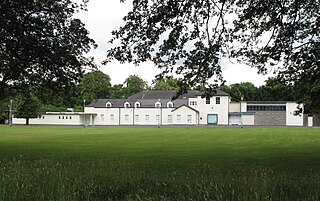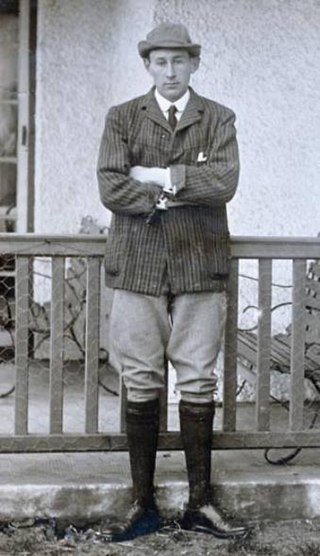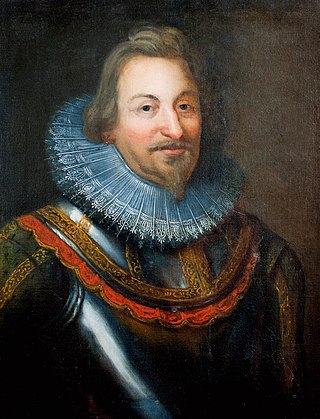
The president of Ireland is the head of state of Ireland and the supreme commander of the Irish Defence Forces.

Domhnall Ua Buachalla was an Irish politician and member of the First Dáil who served as third and final governor-general of the Irish Free State and later served as a member of the Council of State.

Áras an Uachtaráin, formerly the Viceregal Lodge, is the official residence and principal workplace of the President of Ireland. It is located off Chesterfield Avenue in the Phoenix Park in Dublin. The building design was credited to amateur architect Nathaniel Clements but more likely guided by professionals and completed around 1751 to 1757.

Douglas Ross Hyde, known as An Craoibhín Aoibhinn, was an Irish academic, linguist, scholar of the Irish language, politician, and diplomat who served as the first President of Ireland from June 1938 to June 1945. He was a leading figure in the Gaelic revival, and the first President of the Gaelic League, one of the most influential cultural organisations in Ireland at the time.

Lord Lieutenant of Ireland, or more formally Lieutenant General and General Governor of Ireland, was the title of the chief governor of Ireland from the Williamite Wars of 1690 until the Partition of Ireland in 1922. This spanned the Kingdom of Ireland (1541–1800) and the United Kingdom of Great Britain and Ireland (1801–1922). The office, under its various names, was often more generally known as the Viceroy, and his wife was known as the vicereine. The government of Ireland in practice was usually in the hands of the Lord Deputy up to the 17th century, and later of the Chief Secretary for Ireland.

The 1938 Irish presidential election was the first Irish presidential election, held to fill the new office of President of Ireland.
The Canadian order of precedence is a nominal and symbolic hierarchy of important positions within the governing institutions of Canada. It has no legal standing, but is used to dictate ceremonial protocol.
An unofficial order of precedence in Northern Ireland, according to Burke's Peerage, 106th Edition, this is not officially authorised by or published with authority from either Buckingham Palace or the College of Arms, or the Home Office, the Ministry of Justice or the Northern Ireland Office (NIO) of His Majesty's Government in the United Kingdom, or the Northern Ireland Assembly, or the Northern Ireland Executive.

The governor of Northern Ireland was the principal officer and representative in Northern Ireland of the British monarch. The office was established on 9 December 1922 and abolished on 18 July 1973.
Events from the year 1938 in Ireland.

The lieutenant governor of New Brunswick is the representative in New Brunswick of the monarch, who operates distinctly within the province but is also shared equally with the ten other jurisdictions of Canada, as well as the other Commonwealth realms and any subdivisions thereof, and resides predominantly in his oldest realm, the United Kingdom. The lieutenant governor of New Brunswick is appointed in the same manner as the other provincial viceroys in Canada and is similarly tasked with carrying out most of the monarch's constitutional and ceremonial duties. The current lieutenant governor is Brenda Murphy, since September 8, 2019.
Custos rotulorum is a civic post that is recognised in the United Kingdom and in Jamaica.

The lieutenant governor of New Jersey is an elected constitutional officer in the executive branch of the state government of New Jersey in the United States. The lieutenant governor is the second highest-ranking official in the state government and is elected concurrently on a ticket with the governor for a four-year term. The position itself does not carry any powers or duties other than to be next in the order of succession, but the state constitution requires that the lieutenant governor also be appointed to serve as the head of a cabinet-level department or administrative agency within the governor's administration, other than the position of Attorney General.

Ratra House, sometimes called Little Ratra, is one of the minor state residences located in the Phoenix Park in Dublin, Ireland.

Sir Anthony Brutus Babington PC (NI) was an Anglo-Irish barrister, judge and politician.

Donogh O'Brien, 4th Earl of Thomond and Baron Ibrickan, PC (Ire), was a Protestant Irish nobleman and soldier, and Chief of Clan O'Brien. He fought for Queen Elizabeth during Tyrone's Rebellion and participated in the Siege of Kinsale. He obtained the transfer of County Clare, where most of his lands lay, from the Province of Connacht to that of Munster. He was made president of Munster in 1605.
Ireland has limited use of order of precedence.
The chief governor was the senior official in the Dublin Castle administration, which maintained English and British rule in Ireland from the 1170s to 1922. The chief governor was the viceroy of the English monarch and presided over the Privy Council of Ireland. In some periods he was in effective charge of the administration, subject only to the monarch in England; in others he was a figurehead and power was wielded by others.
The order of precedence in Ireland was fixed by Royal Warrant on 2 January 1897 during Ireland's ties to the United Kingdom of Great Britain and Ireland.











